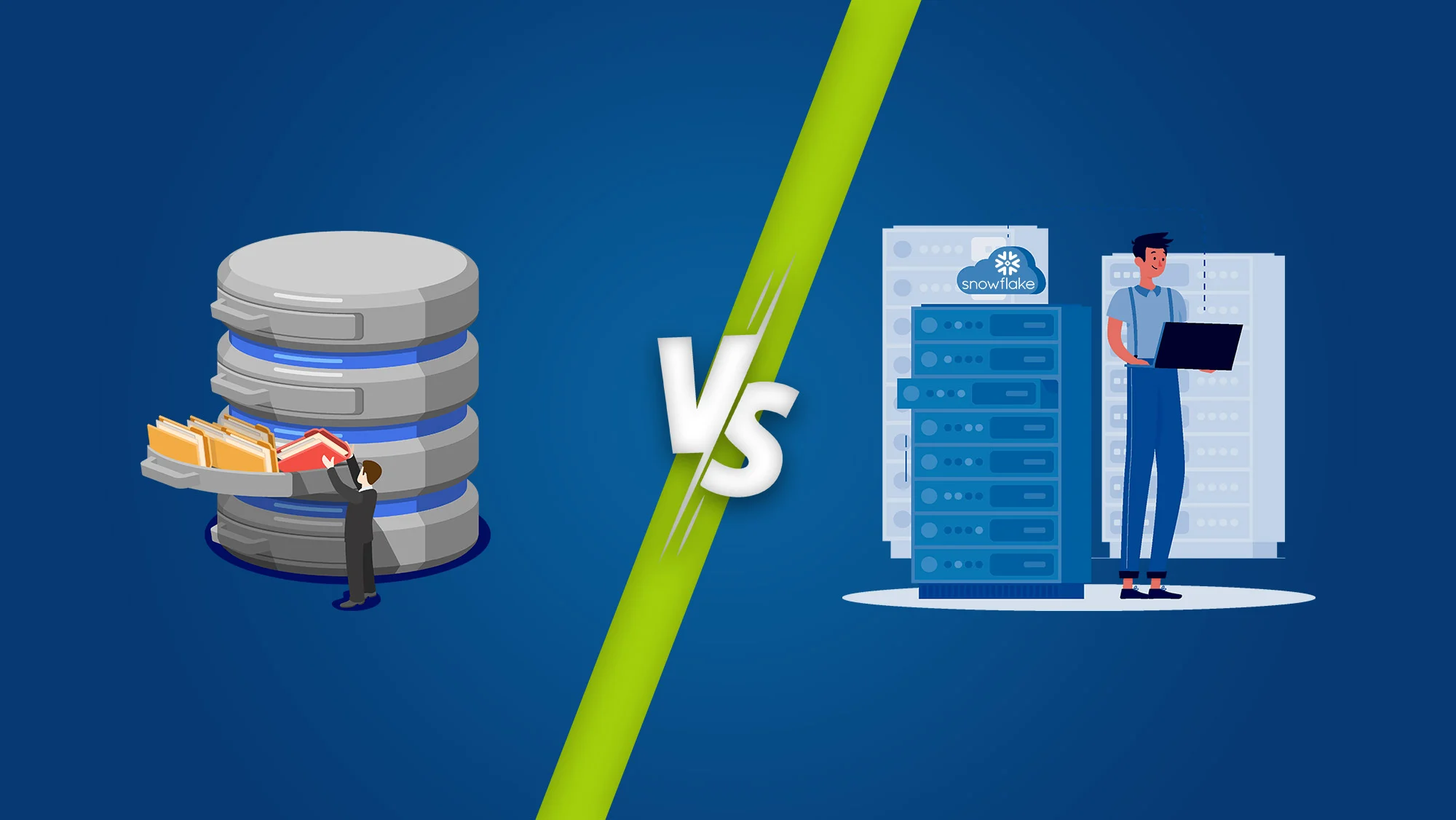
November 16, 2023
In the realm of data management and analytics, choosing the right data warehouse solution is crucial to ensure optimal performance, scalability, and cost-effectiveness. Two major contenders in this space are Snowflake, a cloud-based data warehouse, and traditional on-premises data warehouses. This blog post aims to shed light on the key differences and advantages of Snowflake compared to traditional data warehouses.
Traditional Data Warehouses
Traditional data warehouses have been the backbone of data management for decades. They are typically built on-premises and use a monolithic architecture. Here are some characteristics of traditional data warehouses:
- On-Premises Infrastructure: Traditional data warehouses require substantial investments in physical hardware, maintenance, and skilled IT staff to manage and operate the infrastructure.
- Fixed Capacity and Scalability: Scaling traditional data warehouses can be time-consuming and expensive, often requiring the purchase of additional hardware and extensive downtime.
- Structured Data Only: These warehouses are optimized for structured data, making it challenging to handle semi-structured or unstructured data efficiently.
- Costly: The initial setup costs, ongoing maintenance, and licensing fees for traditional data warehouses can be significant.
Snowflake Data Warehouse
Snowflake, on the other hand, is a cloud-based data warehouse that offers a modern, scalable, and flexible solution. Let’s delve into its characteristics:
- Cloud-Based Infrastructure: Snowflake operates on a cloud-based infrastructure, eliminating the need for on-premises hardware and allowing for more flexible, scalable solutions.
- Scalability: Snowflake provides near-infinite scalability, allowing users to scale up or down based on their requirements without any downtime.
- Semi-Structured and Unstructured Data Support: Snowflake excels at handling not only structured data but also semi-structured and unstructured data, providing a comprehensive analytics platform.
- Concurrent Access and Performance: Snowflake’s architecture supports concurrent access to the data warehouse, enabling better performance and faster analytics.
- Pay-As-You-Go Pricing: Snowflake offers a pay-as-you-go pricing model, which can be more cost-effective, especially for organizations with fluctuating or unpredictable workloads.
- Data Sharing: Snowflake enables easy and secure data sharing between organizations, making collaboration and sharing insights more straightforward.
Advantages of Snowflake Over Traditional Data Warehouses
- Cost-Efficiency: Snowflake’s pay-as-you-go pricing and cloud-based infrastructure reduce overall costs compared to traditional data warehouses.
- Scalability and Flexibility: Snowflake’s ability to scale on demand and handle diverse data types offers unmatched flexibility and agility for businesses.
- Performance: The distributed architecture of Snowflake contributes to faster query processing and better performance, enhancing analytics capabilities.
- Ease of Use: Snowflake’s intuitive interface and ease of setup make it accessible to a broader range of users, reducing the need for extensive training.
- Data Sharing and Collaboration: Snowflake’s data-sharing capabilities enable seamless collaboration and data sharing among internal teams and external stakeholders.
In conclusion, while traditional data warehouses have been the norm for many years, Snowflake’s cloud-based, scalable, and cost-effective approach provides a compelling alternative. The choice between the two ultimately depends on an organization’s specific needs, budget, and long-term goals in the realm of data analytics and management.













